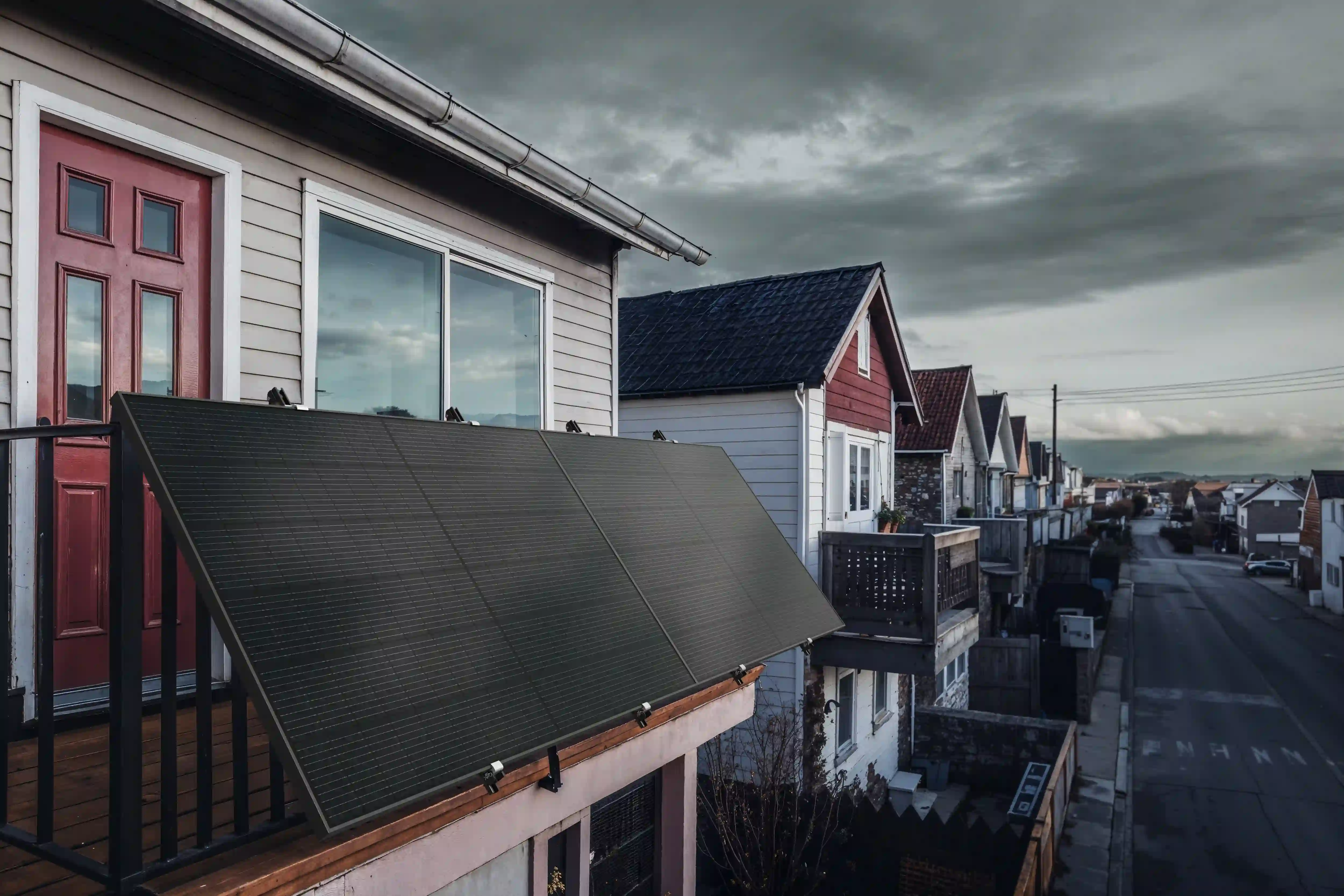A Complete Guide to Hurricane Food Safety After a Power Outage
- Step 1: Lock in the Cold Immediately – Preservation Strategy for the First Four Hours
- Step 2: Assess Risk with a Thermometer and a Clock
- Step 3: Decide the Fate of Your Food with a Checklist
- Step 4: Handle Food and Cans Contaminated by Floodwater
- Step 5: Clean and Sanitize Your Refrigerator and Freezer
- Plan Ahead with the Right Hurricane Preparedness Food!
- FAQs About Your Hurricane Food Supply
Losing power after a hurricane means you need to act fast to keep your food safe. When your fridge stops working or floodwater gets in, the risk of getting sick from spoiled food goes up. It's always safer to throw out questionable food than to risk illness. Here’s a straightforward guide to help you figure out what's safe to eat and how to get your kitchen back in order.
Step 1: Lock in the Cold Immediately – Preservation Strategy for the First Four Hours
The first few hours after losing power are critical for keeping your food safe. Decisions made during this window can mean the difference between saving your groceries and facing a refrigerator full of spoiled food later.
Keep Refrigerator and Freezer Doors Closed
It's important to keep the cold air inside your fridge and freezer even after the power goes out. Try not to open the doors to check on your food. Food will stay cold for about four hours in a refrigerator that is closed. A freezer that is full can stay cold for up to 48 hours, while a freezer that is only half full will usually stay cold for 24 hours. Putting frozen foods next to each other can help them stay cold longer because they insulate each other.
Prepare for a Longer Outage
If it looks like the power won't be coming back on soon, you should take steps to make the safe time longer. For a deeper dive into outage preparedness, including understanding why they happen and how long they might last, you can better gauge your strategy. Putting block ice or dry ice inside the appliance is the usual way to do it. For a more modern method, you can run the fridge on and off with a backup battery or portable power station. This is a very good way to keep the temperature safe.


Step 2: Assess Risk with a Thermometer and a Clock
Once you’ve managed the initial hours, the next challenge is determining whether your food is still safe to eat. Here, accuracy matters more than guesswork, and a few simple tools can make all the difference.
Use Thermometers for Accurate Assessment
The best way to avoid getting sick from food is to use accurate temperature readings. Putting appliance thermometers in your fridge and freezer before a storm can save your life. When the power comes back on, check these temperatures before you open all the doors. The fridge should be at or below 40°F (4°C), and the freezer should be at or below 0°F (-18°C). If you're not sure about certain foods, a food thermometer can help. You can trust this method a lot more than depending on how cold something feels to the touch.
Know the Two-Hour Rule
Bacteria can grow very quickly if the temperature inside your fridge goes above 40°F. As a general rule, you should throw away food that goes bad after being above 40°F for more than two hours. Since this two-hour window adds up, keep track of the sum even if the temperature changes. Time and temperature are the most important things for food safety during an outage, which is what we learned from the first few hours.
Step 3: Decide the Fate of Your Food with a Checklist
Now that you’ve checked temperatures and tracked the time, it’s time to make decisions about what stays and what goes. This process can be difficult, especially when faced with a fridge full of groceries, but erring on the side of caution is always the safer choice.
Refrigerated Foods: What to Discard
Some foods become unsafe quickly once they’re in the “danger zone.” If your refrigerator has been above 40°F for over two hours, discard the following:
- Raw or cooked meat, poultry, fish, and seafood
- Milk, cream, yogurt, and soft cheeses (such as brie or cottage cheese)
- Cooked pasta, rice, and potatoes
- Casseroles, soups, and stews
- Lunch meats and hot dogs
- Eggs and egg-based products (custards, quiches)
- Cut fruits and vegetables
- Opened creamy dressings, mayonnaise, or tartar sauce if above 50°F for more than eight hours
Refrigerated Foods: What Is Likely Safe
Some items are more resilient and can often be kept, even if the temperature has risen briefly:
- Hard cheeses (cheddar, parmesan, Swiss)
- Butter and margarine
- Whole fresh fruits and vegetables
- Jellies, jams, and peanut butter
- Ketchup, mustard, pickles, and vinegar-based dressings
- Bread, rolls, cakes, and muffins
Frozen Foods: The Ice Crystal Test
Frozen foods deserve special attention. If they still contain visible ice crystals or feel rock-solid, they can be safely refrozen, though the texture may decline. If thawed but still at or below 40°F, cook them immediately and eat or refreeze the cooked dish. Any frozen food that has thawed and remained above 40°F for more than two hours should be discarded. Never refreeze thawed meats, poultry, or seafood. These rules echo the importance of temperature and time, which you’ve already seen are crucial in earlier steps.
Never Trust Smell or Appearance Alone
It’s tempting to rely on your senses, but food that looks or smells fine can still harbor harmful bacteria. Spoilage bacteria may produce off-odors or flavors, but the bacteria responsible for illness often leave no trace. Never taste food to judge its safety. When in doubt, throw it out—a principle that runs throughout every stage of hurricane food safety.
Step 4: Handle Food and Cans Contaminated by Floodwater
The threat to your food doesn’t end with the refrigerator or freezer. Floodwater can contaminate pantry items and canned goods, posing additional risks that require careful handling.
Food Contaminated by Floodwater
Floodwater can carry bacteria, chemicals, and debris. Any food not in a waterproof container that has come into contact with floodwater must be discarded. This includes cardboard boxes (cereal, pasta, rice), items with screw caps, snap lids, or pull tops, and all home-canned foods. Even bottled drinks with screw caps are not considered safe if exposed to floodwater, as they are not fully waterproof.
Salvaging Commercially Canned Goods
Some commercially canned foods can be saved if their containers are undamaged. Inspect each can carefully—if you find dents, bulges, rust, or leaks, throw the can away. For intact cans, remove the label, wash the can with soap and water, then sanitize by soaking in a solution of 1 tablespoon unscented bleach per gallon of water for 15 minutes. Let the can air-dry completely before opening or storing. This process is an extension of the same caution you applied earlier in the refrigerator and freezer.
Step 5: Clean and Sanitize Your Refrigerator and Freezer
Once you’ve sorted your food, attention turns to cleaning up and restoring your kitchen to a safe state. This step is just as important as the earlier ones, ensuring that lingering bacteria or odors don’t create new problems.
Dispose of Spoiled Food Safely
Spoiled food should be placed in secure plastic trash bags to prevent leaks and pest infestations. If regular trash pickup is delayed, check with local authorities for designated disposal sites. Prompt and careful disposal helps prevent odors and health risks, reinforcing the importance of acting quickly that was emphasized in the first hours after the outage.
Clean and Sanitize Your Refrigerator and Freezer
After removing spoiled items, clean all interior surfaces, drawers, and shelves with hot, soapy water. Follow up with a sanitizing solution of 1 tablespoon unscented bleach per gallon of water. Leave the doors open for at least 15 minutes to air out and dry completely. This process not only removes bacteria but also helps eliminate lingering odors, making your appliances ready for safe use again.
Remove Odors from Appliances
Persistent odors can be addressed by placing fresh coffee grounds, activated charcoal, or an open box of baking soda on the shelves. These substances absorb odors and help restore a neutral smell to your appliances, making your kitchen feel safe and welcoming once more.
Plan Ahead with the Right Hurricane Preparedness Food!
Thoughtful, timely decisions after a hurricane or power outage can prevent illness and protect your family’s health. Prioritize safety over saving food, and always remember: when in doubt, throw it out. By following these practical steps, you can handle the immediate challenge. Of course, food safety is just one part of a complete strategy for weathering the storm. To be even better prepared for the next time, consider investing in tools like appliance thermometers and a reliable backup battery to power critical devices like your refrigerator. Planning ahead provides true peace of mind.


FAQs About Your Hurricane Food Supply
Q1: What is the very first thing I should do with my fridge when the power goes out?
A: The most important first step is to keep the refrigerator and freezer doors completely closed. Do not open them to check on the food. A closed fridge will stay safely cold for about 4 hours. A half-full freezer can last about 24 hours, and a full freezer can hold its temperature for up to 48 hours. Keeping the cold air trapped inside is the best way to preserve your food in the initial hours.
Q2: What is the main rule for deciding if refrigerated food has gone bad?
A: The most important rule is the "two-hour rule." If perishable foods like meat, milk, or leftovers have been at a temperature above 40°F (4°C) for more than two hours, they are no longer safe and must be discarded. Harmful bacteria can grow rapidly in this "danger zone," so it's critical to use an appliance thermometer for an accurate reading instead of guessing.
Q3: My frozen food has partially thawed. Can I just refreeze it?
A: You can safely refreeze thawed food only if it still contains visible ice crystals or feels rock-solid to the touch. If the food has completely thawed but is still very cold (40°F or below), you should cook it immediately. However, if the food has thawed and has been warm for over two hours, you must throw it away. Never refreeze raw meat that has thawed.
Q4: The food looks and smells fine. Does that mean it's safe to eat?
A: No, you should never rely on appearance or smell alone to determine safety. The dangerous bacteria that cause foodborne illness often do not change the taste, smell, or look of food. Tasting food to check if it's safe is also very risky. The only reliable method is to follow the rules for temperature and time. When in doubt, throw it out.
Q5: Are my canned goods safe to eat if they were touched by floodwater?
A: Commercially canned goods can be saved, but only if the can is completely free of dents, bulges, or rust. You must properly sanitize them first by removing the label, washing the can with soap and water, and then soaking it in a bleach solution (1 tablespoon of bleach per gallon of water) for 15 minutes. Any food in cardboard boxes, jars with screw caps, or any home-canned goods that have touched floodwater must be thrown away.